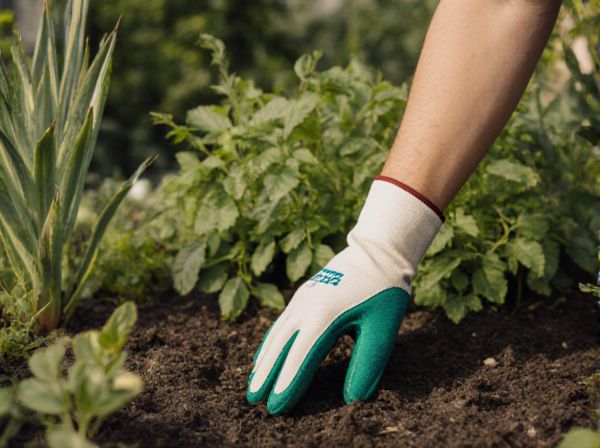
Wilt vs Blotch Illustration
Wilt causes plants to droop and die due to vascular system blockage, often resulting from fungal or bacterial infections. Blotch appears as irregular, discolored spots on leaves or fruit, typically indicating localized fungal or bacterial damage. Differentiating wilt and blotch is crucial for effective disease management and treatment strategies.
Table of Comparison
| Aspect | Wilt | Blotch |
|---|---|---|
| Definition | A plant disease causing drooping and drying due to vascular blockage. | A plant disease characterized by irregular brown spots on leaves or stems. |
| Common Pathogens | Fusarium spp., Verticillium spp. | Alternaria spp., Septoria spp. |
| Symptoms | Leaf yellowing, wilting, stem browning, vascular discoloration. | Yellow halos with brown or black irregular lesions on foliage. |
| Transmission | Soil-borne fungi entering roots, spreading through water and tools. | Airborne spores via wind, rain splash, and contaminated equipment. |
| Impact on Plant | Severe water transport disruption causing plant death. | Reduced photosynthesis and premature leaf drop. |
| Control Methods | Crop rotation, resistant varieties, soil solarization, fungicides. | Fungicide sprays, proper sanitation, resistant cultivars. |
Understanding Wilt and Blotch in Gardening
Wilt and blotch are common plant diseases that significantly affect garden health, with wilt causing plants to droop due to impaired water transport, often linked to fungal infections like Fusarium or Verticillium. Blotch, characterized by irregular spots or lesions on leaves, stems, or fruits, is primarily caused by fungal pathogens such as Septoria or Rhytisma, leading to tissue damage and diminished photosynthesis. Effective garden management requires early identification of wilt symptoms like leaf yellowing and stem discoloration, while blotch recognition relies on spotting distinctive discolored patches, followed by appropriate fungicide application and cultural practices to prevent disease spread.
Key Differences Between Wilt and Blotch
Wilt is primarily characterized by the gradual browning and drooping of leaves due to vascular tissue blockage caused by fungi, bacteria, or nematodes, leading to plant dehydration and death. Blotch appears as irregular, discolored or necrotic spots on leaves or fruits, often caused by fungal infections such as Septoria or Alternaria, affecting surface tissues without directly impairing vascular function. While wilt disrupts the plant's water transport system resulting in systemic decline, blotch mainly causes localized tissue damage and aesthetic injury.
Common Causes of Wilt Diseases
Wilt diseases commonly arise from soil-borne pathogens such as Fusarium oxysporum and Verticillium dahliae, which invade plant vascular systems causing blockage and water stress. Bacterial wilt, caused by Ralstonia solanacearum, also leads to sudden wilting by obstructing xylem vessels. Environmental factors like poor drainage and root injuries exacerbate these infections, increasing susceptibility in host plants.
Primary Factors Behind Blotch Infections
Blotch infections primarily result from fungal pathogens such as Rhynchosporium secalis and Ramularia collo-cygni, which thrive under cool, wet conditions promoting spore germination and spread. High humidity, prolonged leaf wetness, and dense crop canopies create an environment conducive to rapid colonization and symptom development on cereal leaves. In contrast to wilt diseases caused by vascular pathogens, blotch infections are surface-level foliar diseases that impair photosynthesis, leading to reduced grain yield and quality.
Symptoms: How Wilt Manifests in Plants
Wilt manifests in plants through drooping, yellowing, and browning of leaves, often accompanied by stunted growth and reduced vigor. The vascular system becomes compromised as pathogens block water transport, causing leaves and stems to lose turgor pressure and wilt visibly. Symptoms typically start on lower foliage and progress upward, indicating systemic infection or stress.
Blotch Disease Symptoms and Identification
Blotch disease symptoms include irregularly shaped, water-soaked lesions that expand to form necrotic, brown or black spots often surrounded by yellow halos on leaves and stems. Identification relies on observing these distinctive blotches alongside signs of tissue decay and sometimes fungal sporulation on the affected plant parts. Early detection through visual inspection can help prevent severe crop damage caused by blotch pathogens.
Prevention Strategies for Wilt in Gardens
Wilt diseases in gardens can be effectively prevented by implementing crop rotation and selecting resistant plant varieties to reduce pathogen buildup in soil. Maintaining proper irrigation practices and ensuring well-drained soil helps minimize stress on plants, thereby lowering vulnerability to wilt pathogens such as Fusarium and Verticillium species. Sanitation measures like removing infected plant debris and sterilizing tools further reduce the risk of wilt disease spread.
Effective Blotch Disease Prevention Methods
Effective blotch disease prevention methods include selecting resistant tree varieties, implementing proper sanitation by removing infected leaves and debris, and applying fungicides at critical infection periods. Maintaining balanced fertilization and ensuring adequate tree spacing improves air circulation, reducing moisture that promotes blotch development. Regular monitoring during wet seasons enables early detection and timely intervention, minimizing disease spread and damage.
Treatment Solutions for Wilt vs Blotch
Effective treatment solutions for wilt commonly involve the application of systemic fungicides such as thiophanate-methyl and the use of disease-resistant plant varieties to prevent vascular infection. In contrast, blotch treatment often requires targeted fungicide sprays like chlorothalonil or mancozeb, combined with proper cultural practices including leaf litter removal and improved air circulation to reduce pathogen spread. Integrating these treatments with crop rotation enhances disease control and minimizes the risk of recurrent infections in both wilt and blotch conditions.
Choosing the Right Control Measures for Wilt and Blotch
Effective control measures for wilt and blotch require accurate identification of symptoms to target treatment efficiently. Wilt, often caused by soil-borne fungi like Fusarium or Verticillium, responds well to crop rotation, resistant varieties, and soil sterilization. Blotch diseases, primarily fungal infections such as leaf blotch in cereals, necessitate timely application of fungicides and removal of infected plant debris to limit spread.
Wilt vs Blotch Infographic

 gardendif.com
gardendif.com